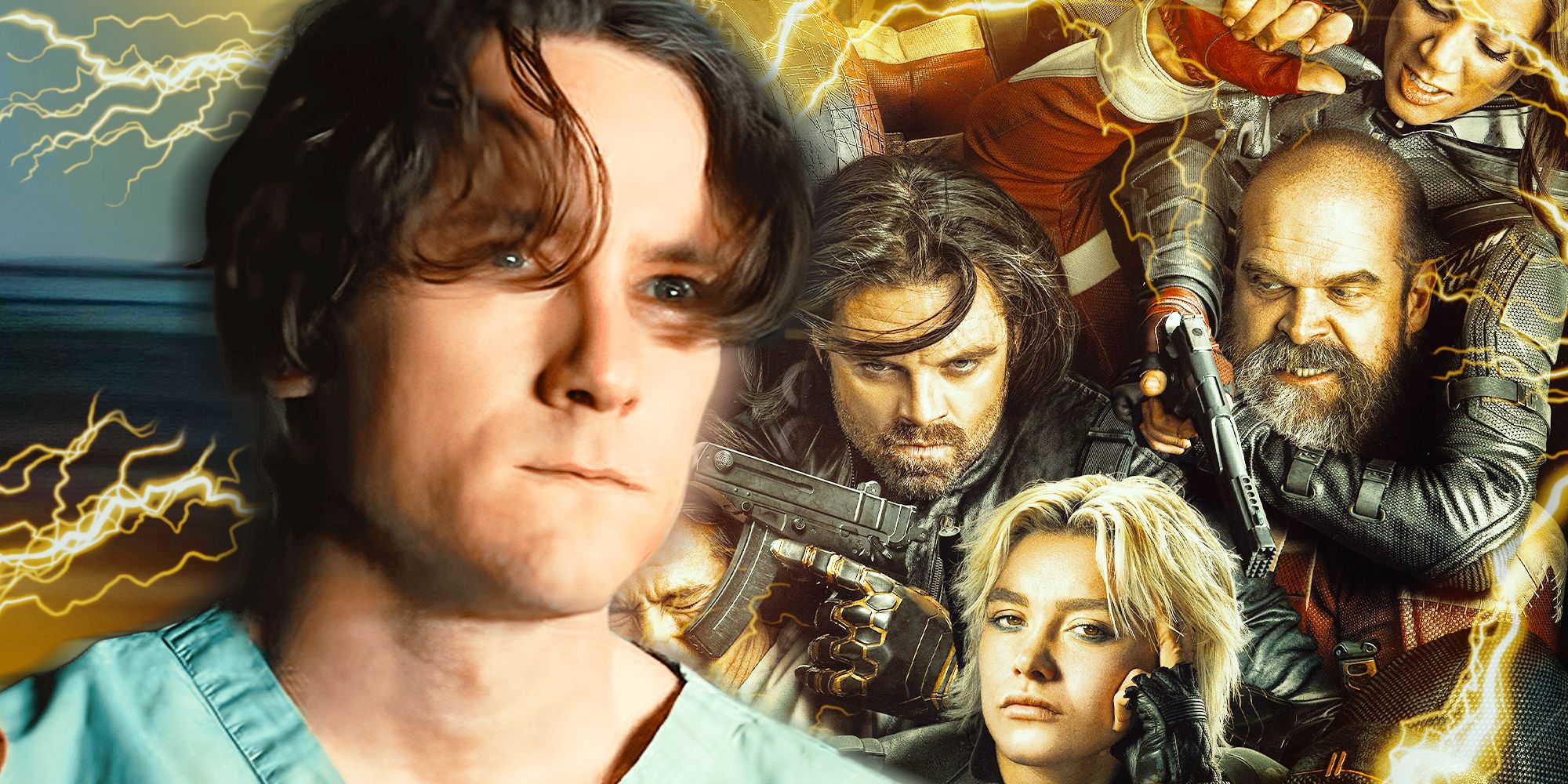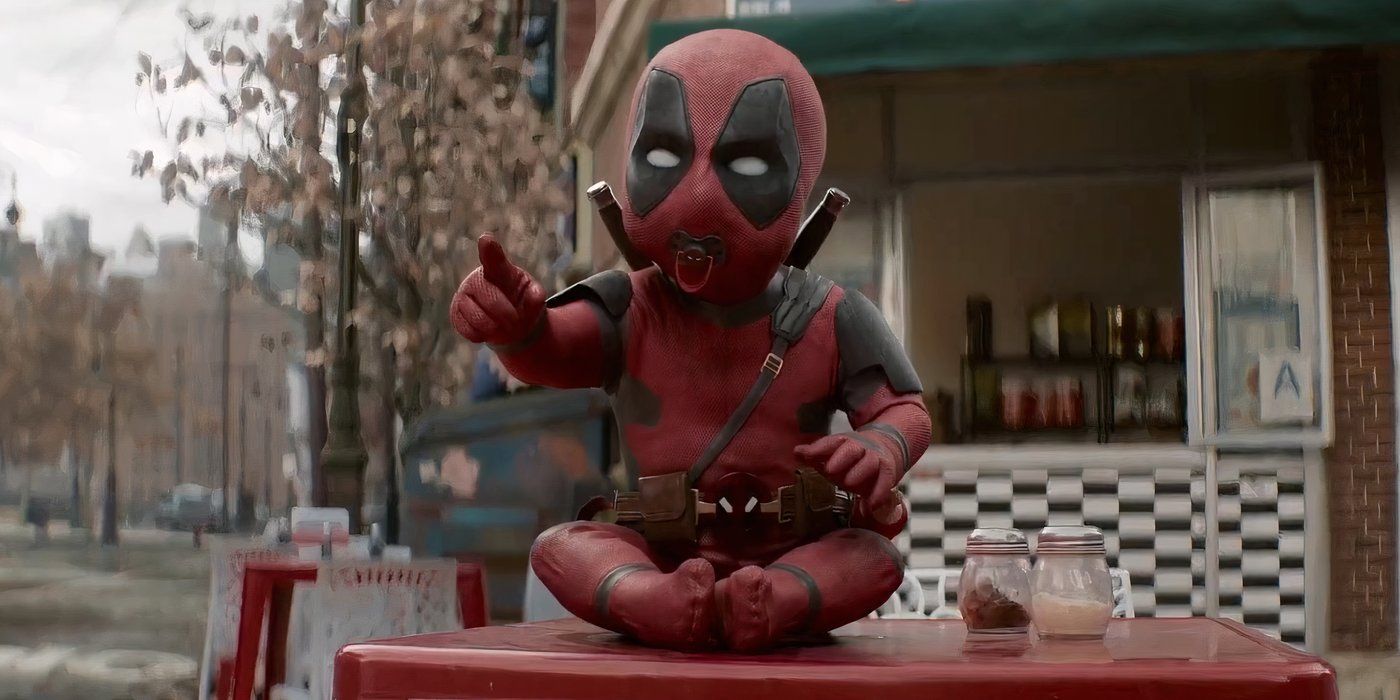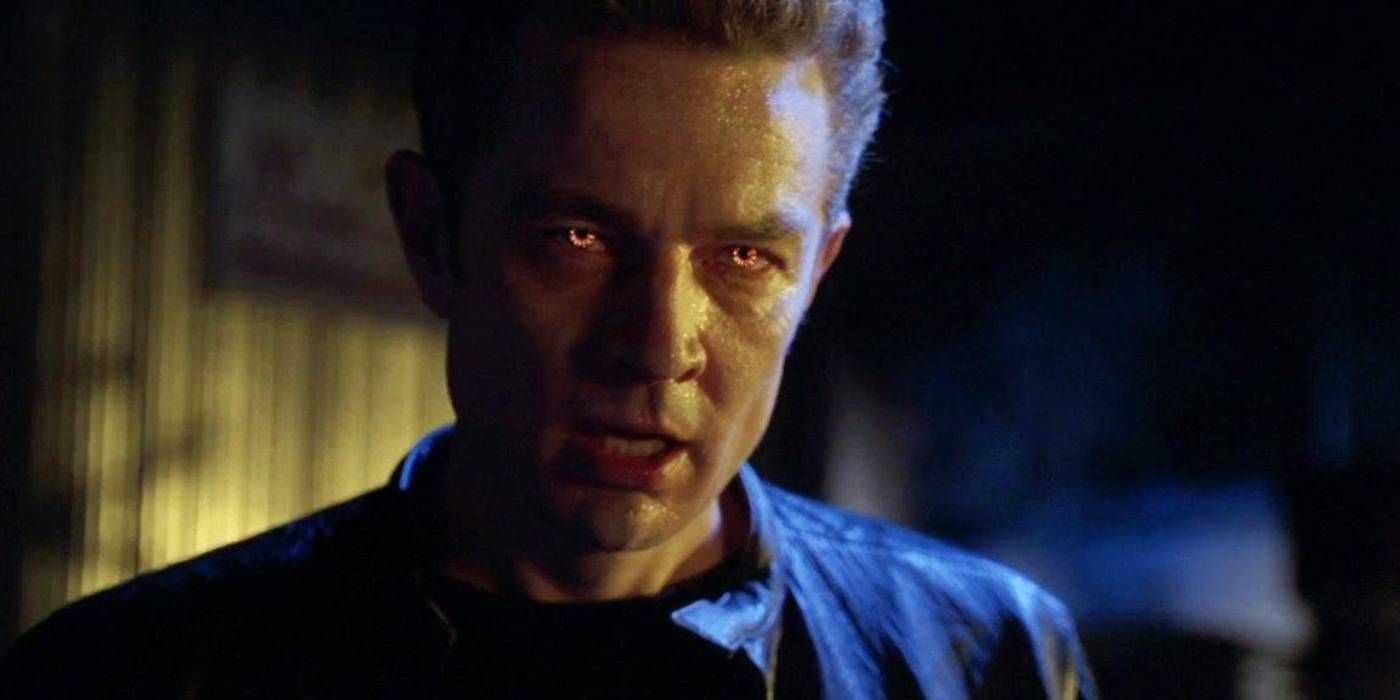10 Darkest Stories From Batman: The Animated Series, Ranked
Batman: The Animated Series could get surprisingly dark for a Saturday morning cartoon for kids, with plenty of episodes that pushed the limits of what "family-friendly" animation could get away with. To this day, Batman: The Animated Series remains the premiere version of the Batman mythos for many people, creating perhaps the most iconic version of Gotham City and its inhabitants while also kickstarting the entirety of the DCAU family of shows. Part of the reason the series is still so highly regarded is due to just how adult it could get.Indeed, Batman: The Animated Series wasn"t afraid to pull its punches when it came to incredibly dark or bleak storylines. The series was often subjected to intense scrutiny by networks, but more often than not, Batman: The Animated Series used censorship to its advantage, getting creative with how it was able to depict heavy themes like death, hallucinations, or even abuse. As a result, a few episodes stand out as shockingly dark but amazing stories worthy of discussion all these years later.
10 Batman Keeps Robin From Facing His Parents' Killer Robin's Reckoning
 Not only did Batman: The Animated Series feature arguably the greatest non-comic depiction of Batman himself, but it also easily had the best incarnation of Robin of any movie or TV show. This was proven in episodes like Robin"s Reckoning, which explored Dick Grayson"s origin story as the son of two circus acrobats who are killed by criminals in an intentional accident during one of their routines. When the killer of his parents resurfaces, Batman does all he can to prevent Robin from taking on the case.
Not only did Batman: The Animated Series feature arguably the greatest non-comic depiction of Batman himself, but it also easily had the best incarnation of Robin of any movie or TV show. This was proven in episodes like Robin"s Reckoning, which explored Dick Grayson"s origin story as the son of two circus acrobats who are killed by criminals in an intentional accident during one of their routines. When the killer of his parents resurfaces, Batman does all he can to prevent Robin from taking on the case.It"s eventually revealed that Batman"s reasons for doing so aren"t because he doesn"t trust his young ward not to take revenge, but because he"s worried that mobster Tony Zucco will take Robin"s life next. The episode has quite the harrowing depiction of the Flying Graysons" death, even if it isn"t directly shown on screen. However, this is only an inkling of the darkness that Batman: The Animated Series is truly capable of unleashing.
9 Batman Is Tormented By The Ghost Of His Father Nothing to Fear
 Throughout the entirety of Batman: The Animated Series, Scarecrow and his fear toxin are, appropriately, behind some of the most intense and unforgiving imagery in the whole show. Enter Nothing to Fear, the villain"s first appearance that chronicles his time as a university burglar wreaking havoc on the campus of Gotham University, using his fear gas to show people their worst nightmares. Even if Scarecrow"s goofy The Wizard of Oz costume is a far cry from his later horror-movie-villain redesign, the effects of his gas are no joke.
Throughout the entirety of Batman: The Animated Series, Scarecrow and his fear toxin are, appropriately, behind some of the most intense and unforgiving imagery in the whole show. Enter Nothing to Fear, the villain"s first appearance that chronicles his time as a university burglar wreaking havoc on the campus of Gotham University, using his fear gas to show people their worst nightmares. Even if Scarecrow"s goofy The Wizard of Oz costume is a far cry from his later horror-movie-villain redesign, the effects of his gas are no joke.When Batman is unlucky enough to inhale Scarecrow"s gas, he gets a taste of his own worst nightmare - The ghost of his idealized father, Thomas Wayne. Not only is Thomas" reappearance traumatic enough considering the profound impact his death had on Bruce"s psyche, but he violently morphs into a red skeleton, unleashing some quite intense spooky visuals on Batman and the audience. Luckily, Batman is ultimately able to conquer his fears, leaving the frights back in the world of the imaginary.
8 Batgirl Dies, Causing A War Between Batman And Gordon Over the Edge
 Of course, Nothing to Fear would be far from the only time Scarecrow"s fear toxin demolished the psyche of a member of the Bat-Family. Widely considered to be one of the best episodes of The New Batman Adventures, Over the Edge begins with Scarecrow pushing Batgirl to her death, causing her father, Commissioner Gordon, to realize her secret identity for the first time. This begins a war between the normally friendly Batman and Gordon, including a police assault on the Batcave and Gordon hiring Bane to nearly kill The Dark Knight for good.
Of course, Nothing to Fear would be far from the only time Scarecrow"s fear toxin demolished the psyche of a member of the Bat-Family. Widely considered to be one of the best episodes of The New Batman Adventures, Over the Edge begins with Scarecrow pushing Batgirl to her death, causing her father, Commissioner Gordon, to realize her secret identity for the first time. This begins a war between the normally friendly Batman and Gordon, including a police assault on the Batcave and Gordon hiring Bane to nearly kill The Dark Knight for good.In the end, it"s revealed that the entire thing was a hallucination Batgirl experienced courtesy of Scarecrow"s gas, meaning that most of the episode"s events never happened. Still, the alternate reality conjured by the fear toxin is so bleak that it"s hard not to give it a couple of extra points in terms of determining its place among the darkest entries in Batman: The Animated Series canon. That being said, the most grim and dour episodes of the series with events that actually happen are yet to come.
7 Clayface's Origin Is Surprisingly Gnarly Feat of Clay
 Clayface is an underrated villain in the incredible and expansive rogues" gallery of Batman: The Animated Series. Like many of the show"s evildoers, Clayface"s backstory actually makes him out to be something of a tragic figure, almost relatable in his circumstances, prodding him to villainy. His origin is explained in Feat of Clay, which explains how movie star Matt Hagen"s career ended after suffering a car accident that leaves his face disfigured.
Clayface is an underrated villain in the incredible and expansive rogues" gallery of Batman: The Animated Series. Like many of the show"s evildoers, Clayface"s backstory actually makes him out to be something of a tragic figure, almost relatable in his circumstances, prodding him to villainy. His origin is explained in Feat of Clay, which explains how movie star Matt Hagen"s career ended after suffering a car accident that leaves his face disfigured.Hagen soon grows addicted to a clay-like substance that allows him to morph his face into anyone he wants, including his old dashing good looks, provided to him by Roland Daggett. Before long, Hagen is forced to drink a dangerous overdose of the chemical, officially turning him into the amorphous monster Clayface. Between the body horror, the tragedy of Hagen"s disfigurement, and the themes of drug addiction, there"s a lot of darkness to unpack in Feat of Clay. But Hagen definitely has a certain level of responsibility to be held to for his crimes.
6 Baby-Doll's Tragic Breakdown Baby-Doll
 Batman: The Animated Series sure loved to tell stories about disgraced actors struggling to cope with some kind of physical ailment that makes finding future work difficult. A very similar story to Clayface"s is told in Baby-Doll, although it"s subject is far more sympathetic, making the dark themes all the more bitter. Mary Louise Dahl was once the beloved child star of a sitcom, but a rare condition that prevented her body from aging kept her from finding work after the series ended.
Batman: The Animated Series sure loved to tell stories about disgraced actors struggling to cope with some kind of physical ailment that makes finding future work difficult. A very similar story to Clayface"s is told in Baby-Doll, although it"s subject is far more sympathetic, making the dark themes all the more bitter. Mary Louise Dahl was once the beloved child star of a sitcom, but a rare condition that prevented her body from aging kept her from finding work after the series ended.Snapping on her 30th birthday, Baby-Doll plans a horrific murder-suicide involving the entire cast of her old show, leaving it up to Batman and Robin to stop her. Mary Dahl is a truly tragic victim of circumstances, and it"s easy to see how her psychotic break developed due to her painful loneliness. As heavy as this episode gets, the darkness is held barely at bay by one of Batman"s more sympathetic moments, giving Baby-Doll a shoulder to cry on.
5 Robin Is Traumatized By A Portion Of Clayface Gaining Sentience Annie
 Batman: The Animated Series and its third season, The New Batman Adventures, often delved surprisingly deep into the realm of science fiction horror, as in episodes like Annie. Here, Robin befriends a mysterious girl around his age that seems to have no memory of her past, though she is pursued by a menacing figure. It turns out that the figure is Clayface in disguise, who had actually squeezed out a chunk of himself and given it sentience and form to become the young lady.
Batman: The Animated Series and its third season, The New Batman Adventures, often delved surprisingly deep into the realm of science fiction horror, as in episodes like Annie. Here, Robin befriends a mysterious girl around his age that seems to have no memory of her past, though she is pursued by a menacing figure. It turns out that the figure is Clayface in disguise, who had actually squeezed out a chunk of himself and given it sentience and form to become the young lady. The idea of Clayface not only creating life, but reabsorbing it and effectively killing a sentient being is a horrifying prospect indeed. Even if no human beings technically die here, it certainly does seem as though Annie was a separate entity from Clayface, and Robin gets surprisingly brutal in his attempts to get revenge for her "death". It"s no wonder that the upcoming Clayface movie aims to be inspired by horror films, considering the bleak possibilities of the character explored in these kinds of stories.
4 Bruce Wayne Kills Himself To Escape An Idyllic Reality Perchance to Dream
 Batman: The Animated Series has certainly explored some nightmarish hallucinogenic world already, but what makes Perchance to Dream so compelling is that it offers Batman a choice. In this episode, Bruce Wayne suddenly awakes to find himself in an idyllic world in which he"s happily married to Selina Kyle, and someone else is Batman. Though he can"t shake the feeling something is wrong, it"s hard for Bruce not to become enamored with this perfect version of his own life.
Batman: The Animated Series has certainly explored some nightmarish hallucinogenic world already, but what makes Perchance to Dream so compelling is that it offers Batman a choice. In this episode, Bruce Wayne suddenly awakes to find himself in an idyllic world in which he"s happily married to Selina Kyle, and someone else is Batman. Though he can"t shake the feeling something is wrong, it"s hard for Bruce not to become enamored with this perfect version of his own life.Before long, Bruce realizes that the entire reality is a fantasy created by the villain Mad Hatter to keep him pacified, and to escape, he"ll have to take his own life. Watching Batman give up a world in which he"s actually happy in order to keep pursuing his vision of justice and vengeance is simultaneously inspiring and depressing. The hallucination very well may have been real enough for Bruce Wayne to stay there forever, making his choice to leave all the more heartbreaking.
3 Mr. Freeze's Heartbreaking Backstory Heart of Ice
 One of the most grim episodes of Batman: The Animated Series, Heart of Ice, is also one of its most iconic. Reflecting the amazing comic changes made by Batman: The Animated Series, this story revolutionizes the backstory of the ice-themed villain Mr. Freeze. Rather than being a simple common crook, it"s revealed the freeze-ray-wielding criminal actually has a very noble goal: to keep his wife, Nora, cryogenically preserved until a cure to her rare illness can be found.
One of the most grim episodes of Batman: The Animated Series, Heart of Ice, is also one of its most iconic. Reflecting the amazing comic changes made by Batman: The Animated Series, this story revolutionizes the backstory of the ice-themed villain Mr. Freeze. Rather than being a simple common crook, it"s revealed the freeze-ray-wielding criminal actually has a very noble goal: to keep his wife, Nora, cryogenically preserved until a cure to her rare illness can be found.Tragically, the greed of Dr. Fries" corporate sponsor literally pulls the plug on Nora, causing her to die and leaving the newly-created Mr. Freeze searching for revenge. This episode deals with some very real issues, such as profits overshadowing lives in healthcare, and gives Mr. Freeze more of a complex and sympathetic origin. If it wasn"t for the fact that Nora is eventually revealed to still be alive in another episode, this would easily be among the darkest moments in the entire show.
2 Poison Ivy's Horrific Experiments House & Garden
 A simple name like House & Garden truly betrays the horrific nature of the story lurking in the episode. When a seemingly plant-based creature commits a high-profile theft, Batman suspects Poison Ivy is behind the caper, only to be told by Gordon that Ivy has turned a new leaf as a simple housewife with a husband and two stepsons. Sure enough, Batman"s own surveillance seems to back up the story, leaving his battles with a green plant monster all the more perplexing.
A simple name like House & Garden truly betrays the horrific nature of the story lurking in the episode. When a seemingly plant-based creature commits a high-profile theft, Batman suspects Poison Ivy is behind the caper, only to be told by Gordon that Ivy has turned a new leaf as a simple housewife with a husband and two stepsons. Sure enough, Batman"s own surveillance seems to back up the story, leaving his battles with a green plant monster all the more perplexing.However, Batman and Robin soon learn the awful truth - Poison Ivy actually mind-controlled her "husband" and forced him to marry her, using his DNA to create fast-growing plant clones impersonating him and his hypothetical sons. Not only are the implications of Poison Ivy"s romantic mind control too disturbing to consider for a kid"s show, but the visceral body horror of her terrifying plant-human hybrid children is enough to even make Batman lose his cool. It"s hard to beat House & Garden when it comes to truly dark episodes of Batman: The Animated Series.
1 Harley Quinn Endures A Toxic, Abusive Relationship Mad Love
 One of the highest-profile feats of Batman: The Animated Series was the creation of Harley Quinn, who has since become one of DC"s flagship characters. But it"s important to remember that Harley"s backstory wasn"t explained in her first appearance, instead retroactively described in the episode Mad Love. Here, it"s revealed that Dr. Harleen Quinzel was once a promising young psychologist working at Arkham Asylum who was manipulated and mentally broken by the Joker, becoming his deranged sidekick and abused romantic partner.
One of the highest-profile feats of Batman: The Animated Series was the creation of Harley Quinn, who has since become one of DC"s flagship characters. But it"s important to remember that Harley"s backstory wasn"t explained in her first appearance, instead retroactively described in the episode Mad Love. Here, it"s revealed that Dr. Harleen Quinzel was once a promising young psychologist working at Arkham Asylum who was manipulated and mentally broken by the Joker, becoming his deranged sidekick and abused romantic partner.What makes Mad Love so bleak in comparison to other Batman: The Animated Series episodes is its earnest depiction of Joker and Harley Quinn"s toxic relationship. No one will ever meet a Poison Ivy that creates vat-grown clones of their likeness, but manipulation and abuse similar to the Joker"s could easily haunt one"s real life. For its chillingly accurate version of a very real subject, Mad Love takes the cake as the single darkest story in Batman: The Animated Series history.
Upcoming DC Movie Releases
[圖擷取自網路,如有疑問請私訊]
|
本篇 |
不想錯過? 請追蹤FB專頁! |
| 喜歡這篇嗎?快分享吧! |















